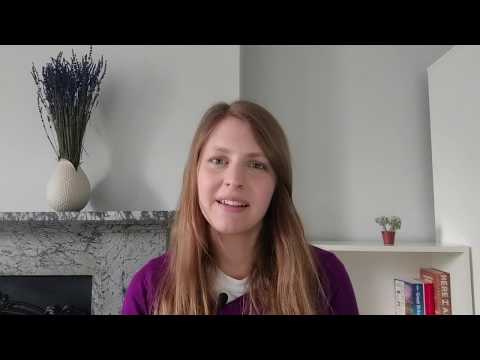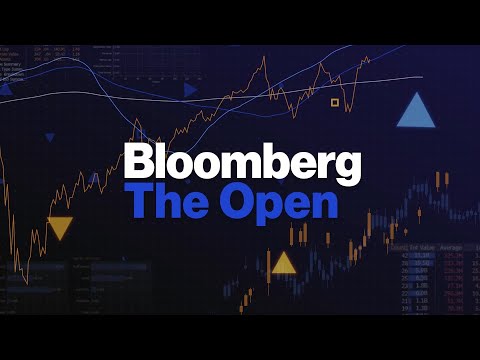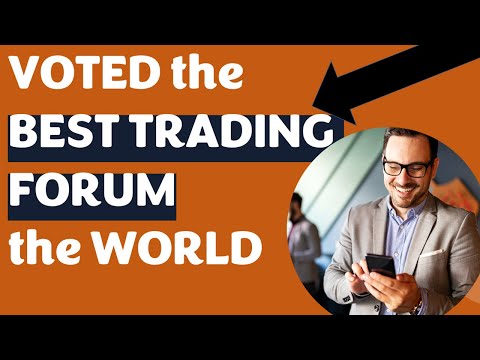Mobile on Air: The Business Value of the Web

Hello, everybody. I am rafaela, and i work in the market insight team at google. Meaning that i run research. To uncover, insights. About consumers, and about businesses. And today i'm here with olga, to talk to you about great. Web experience. And what it might means for you. In particular, we want to share the results, of two studies that we have run in 2019. And early 2020.. I will cover the first one, that is mobile payments and incremental, gains. While olga. Will walk you through the milliseconds. Make million. I will start to talk to you about, the mobile, pains in incremental, gains. By sharing with you this key number, this is 27. Billion. And it represents. The estimated. Revenue, opportunity. On mobile, sites, or as we call amp sites. Across emea, and across, travel, and retail industries. And this opportunity. Is there to be taken. If only the brands are able to deliver, a seamless, experience. To our customers. On the mobile sites. But where does this number come from. So let's rewind, and start from the beginning. So we know that the shoppers, nowadays, are browsing and browsing. More from the mobile devices, than any others. But then when it comes to conversion. Let's say. Purchasing. They tend to go to other devices. Like desktop. So our hypothesis, is that brands, are really missing, out on an incremental. Conversion. On mobile. So what did we do to help them to find a solution. We have run these studies. About incremental. Gains, and the paints on mobiles. So let's dig, on the results. First of all we have worked with scheme, third party agency. Throughout the 2019. And we spoke with 18, 000 people, across 15 markets, in emea. And in five industries. There are flights. Accommodation. Holidays, package. Consumer, electronics. And fashion. I want to point out that this study has been run in 2019. While all those verticals. Were operating, in a business as usual, mode. However. Despite, today they are all heavily, disrupted. We still think that those results. Will be really relevant. Especially. In the future recovery, plans. So let's start from the beginning. And to untangle, what we have uncovered. So the mobile, today. Is used very much by consumers. Because it's flexible.
And Because it allows, them to get instant gratification. For input shopping, needs. Imagine somebody that is, on the go. And it has like a short burst of free time to fill. Or. Imagine that no matter the time no matter the place. People heard about a flash sale online, and they want to catch it, while the mobile. Is helping you to do so right. And in this context. Desktop, is increasingly, becoming, impractical, and inconvenient. Simply because we never have our laptop always with us it doesn't fit in our pocket right. And so has the consumers, his playing back here is for dating. That's why also mobile are becoming, simply. More convenient. And more immediate, to use. In addition. Apps. Are as well, on the smartphone. So all good here. But on the other side they are also demanding, in terms of resources. For instance, storage space, and batteries. Also it doesn't allow to browse freely, as a mobile site, allows people to do that they can simply jump from one to another. So they're actually, narrowing down a lot the type of research that you can do on the apps. However, despite, all these positive, elements. About mobile, and m sites. What is happening is that 62. Of people. Prefer to purchase. From either like. Desktop. Or ops. Or they simply go offline. So why is that. Is it because, people, have a total aversion. Towards, mobile, and the tiny screens. Or is there any other reasons. Well the answer is coming from the next chart. That says. That actually, only six percent. Of those consumers. Have a total aversion. Towards a mobile web. The other 68. Actually. Phoned. Some barriers. During the journey of purchasing. And this is what put them off really. And this is what we call experiential. Type of barriers. So actually the good news for us because if it is experiential. Definitely, is some there is something we can do. To help the people to overcome those. Barriers. So let's dig on the study results to really understand. Which are those barriers. Before doing that we need to say that nowadays. Consumers. Don't have, a linear journey. Anymore. Because. They start. To think about the product that they want to purchase. And then they go into what we call exploration. And evaluation. Phase. That is synthesized, in the word messy, meal. But don't take me wrong they actually, enjoy, spending, time, in this phasing you know, exploring, all the options, evaluating. All the options, and then deciding, what is best for us and purchasing. However, what we observed. On the mobile. Is that the people get stuck at this phase. And then they simply drop from the purchase so they do not convert, there. So why what is happening, something must be wrong at this point. And what we uncover, with this study is that actually, there are 10 different buyers, that people are actually, meeting. In this massive middle phase. And those are scrolling fatigue. Unfulfilled. Autofill. Fragmented, comparison. Bringing items, to life. Persistent, pop-ups. Information, blindside. The search struggle. Missing details. Licensing, with the brand, and the regrettable, refresh. So as we said let's plot, all of these barriers, against the previous. Journey that i showed you before, and we realized. The majority, of them, are actually concentrated. In the exploration. And the evaluation.
Phase. So our hypothesis, was correct. Something goes wrong here. And it's so badly affecting, consumers, that they simply stop the purchasing. On that device. But looking at this chart, you might also think that actually, there are many of those barriers, and you cannot address, all of them at the same time, and which are the crucial ones for the consumer, which one to prioritize. We did this exercise, for you, and we uncovered that actually there are top five barriers. That are particularly. Key for consumers. And those are the ones that are able, to generate, the majority, of the additional, revenues. For the brands. Those are scrolling, fatigue. Scrolling, fatigue, is the ubiquitous. And monotonous. Scrolling, functionalities. That people have to go through, when they are searching for information. When they're searching for the best option. When they're searching, for more opportunities. And more like occasion, for them. But actually this process, is becoming like more and more you know boring. And overwhelming. And aimless. And so consumers, get lost. And suddenly. They drop from the purchase, journey. The second one is unfulfilled. Autofill. Essentially, this is the need that consumers, have. To retrieve. Personal. Information. In order to not to fill. Very tiny forms on a very tiny screen. The third one is fragmented, comparison. So imagine that you are purchasing, something from a desktop. You open different tops, you can click from one top to another, and compare. The offers in a very easy way. But imagine doing that on a mobile phones. People sometimes, don't remember, how to retrieve. All the taps that they have open. Sometimes they press the arrow that brings them back, but they lose, the search that we're making, and so this is frustrating, them mentally. And so they drop. Bringing, item to life. So this is about product and experiences. Not optimally, represented. On the online, world, and so people don't feel very much confident, about what they are purchasing. And simply drop, from the purchase as well. And then persistent, pop-ups. So pop-ups, and, information. That are overloading. The people, are taking actually. Like a very precious, space. Of the tiny screen. And it is also distracting, the consumers. I see, a pop-up, i started to think about something, else, and i forget sometimes about purchasing. Of course those are the top five barriers, according to the consumers. But we also need to discuss, with each and every one of you which one is more relevant, for your business. Because some of them might be already addressed by you, some others are new. So let's, discuss, together also about which are the key priorities, for you. Nevertheless, if we put, all the five barriers, that i just described, to you. Across the 15 markets. And across, all those five, industries. This is how we calculated, this 27.
Billion Opportunity. That is divided, as following. Six billion. Opportunity. In flights. Three billion opportunity. In accommodation. Seven billion opportunity, in holiday package. Four billion, in consumer electronics. Seven billion, in fashion. And i want to point out once again, that it is, incremental. Opportunity. That means that this is the monetary, estimation. Of all those journeys, that started, on the smartphone. But they they never ended on a smartphone, only they'd never, been performed. On any other devices. Or offline. So actually the missed, opportunity. That we have calculated. Here. So imagine somebody that wants to purchase. A new gym gear. It probably starts, you know like to open a couple of sites on the smartphone. But then the information, are overwhelming. The forms, are too time consuming, to feel, and they tend to stop, all together. And so they might just decide, to use the old year that they have at home, or simply, never entering the workout. So this is definitely. A sub-optimal. Experience. Both for the seller. And also for the buyers. And for sure some of your customers, have felt like this that that, probably they felt lost. You know, so what can you do, to help them, in order to provide, solutions. Seamless experience. And also getting them to purchase, from you. We have started to brainstorm. On some of these solutions. For each of the barriers, we started to plot, which could be the google solution that can actually, help you. For instance unfulfilled. Autofill. Why don't you think about, implementing. Gpa, or any other payment solution, that are actually helping consumers. To retrieve, their information. And avoiding, them, to input the credit card number. All the time. Or simply, an autofill. In form. So we have started, as a set like just penciling, some of those solutions. For each of the barriers. But once again some of them might be more fitting, for you some other, less. Well now we reached the end of this presentation. And i really hope you have a good glimpse and understanding, about all the harmfuls. That our consumers, in me are facing. When they are purchasing. On mobile sites. However, there is another, a sixth barrier let's say. That is very important is playing silently, behind the scenes.
But Is very very very important, and this is the speed. And now we lend over to olga, they will tell you more about that. Thank you rafaela, and hello everyone. My name is olga, and i'm leading marketing for mobile web. Today, i want to talk to you about the six user pane, site speed. Now we know that slow site is a bad user experience. In fact if a site takes longer than one second to load, users, start losing focus. However. It didn't come up as one of the main reasons, for participants, of our mobile pins and game study, to abandon their purchase journey. So could it be that although slow speed creates some kind of friction for users. It doesn't, actually. Deter them from buying on this site, and so subsequently, has no business impact. We decided to find that out in another study. So what exactly did we do. We wanted to isolate, speed as a user experience, metric, and see how the loan impacts revenue-related. Kpis. Such as progression, users through the site. Bounce rates page views conversion, rates and so on. With commissioned, 55, data agency and deloitte digital, to conduct this research for us. Jointly, we've contacted, over 70, brands. Some with big international, names, and asked them to share their data with us. After rigorous, audits of their web analytics, setup. 37. Were considered, viable to participate, in this research. We've monitored, them over a four-week, period in october, and november, 2019. Recording, data, on over 30 million user sessions. Now i want to note that the study was done pre-coronavirus. Outbreak. Yet we still think that the results, are insightful. And relevant. And we decided, to share them with you. These 37, brands represented, four verticals. Retail, luxury. Travel, and lead generation. To clarify, when i say lead generation, i mean your typical. Insurance, sites car dealerships. Even your gym membership, site, so anywhere where purchase doesn't happen necessarily. Online, but there is some mechanism, for users to express, interest, in your offering. So what exactly did we do. We've decided, what pages on these sites we're going to track, what kind of speed metrics, we are interested, in and what kind of revenue, related kpis, are relevant, for each vertical. We then recorded, both, speed data, and the revenue related kpis. For every hour in the span of 30 days. We then merge the two data sets together, and run some regression, analysis, on it to see if there are any statistically, significant, correlations. And indeed the results were, very interesting. So, what were the results of the study. The key overarching, result, was that site speed matters. In fact improvement, in site speed increased the likelihood, of users progressing, further, through the website. It also encouraged, people, to view more pages. Convert, better and even purchase, more. Let's have a look at retail. This is your typical, retail funnel. A user lands on the home page, goes into the product listing page, jumps into a specific, product detail page, adds this product to basket, goes through the checkout, flow, which can be a one-step, checkout or multiple step checkout, and finally, submits, the order. Now, let's have a look at how 0.1. Second improvement, of site speed metrics, across the site, impacted the likelihood, of users progressing, further through this purchase journey. Positive, impact across the board. With only exception, on the homepage, the product listing page. What's happening there. Our hypothesis. Is that on a faster homepage. Promo banners are also loading faster. So users, click on those rather than jumping the category, page. Also i want to note that these are percentages. Not percentage. Points. But the most interesting, finding for us was a nine percent increase in the ad to basket, rate. This is a very critical step when a user actually decides to buy something from your site. And also a very significant. Impact. Now. Let's have a look at luxury. Luxury purchases, typically, don't happen online. You so we tracked users going to the add to basket step or contact, us page. And again. Positive, impact across the board. You might even think, that the numbers look too high to be true. But keep in mind that the progression, rates on luxury, sites tend to be quite small. So if only 0.5. Percent of your users, progress, from product detail page to add to baskets, tab, then a 40, improvement, will bring this number up to 0.7. Which is still quite significant. But sounds a little bit more realistic.
But The most interesting, finding for us was an increase in page views apparently. On a faster luxury, site, users will view on average, eight percent, more pages. And now, let's have a look at travel. Here i want to stress again, that the study was done pre-coronavirus. Outbreak. So when no travel restrictions, were in place. Also we don't have any numbers, on the product listing page to the add-ons, tab. This is due to the fact that travel journeys, varied, widely across travel sites, some had no add-ons. Some had add-ons in different order so we decided to amend the step at the vertical, level. Now let's have a look at results. Again. Positive, impact across the board. Probably the most impressive, was a 10. Increase in booking rates on faster travel sites. And finally. Let's have a look at lead generation. Lean generation, funnels, are the shortest. Users either go to the information, page, where they read more about specific, policy, or offering. Or they submit a form. And again. Positive, impact across the board, especially, on the form submission, step which is very crucial. And similar to the luxury, funnel we did see an increase, in page views. Apparently, on a faster lead generation, site, users tend to view on average. Seven percent, more, pages. Now, some brands already understood. The impact site speed has on their business results. Firefight. An online fashion retail platform, created their own performance, business calculator. To estimate, the impact, of any new design, change. For each new design change. They see how that will impact their load times and subsequently, their revenue. So they can make an informed decision, whether to implement this design, change or not. Now this was a very short overview of the study. If you want to see the full set of the results we've got, understand, methodology. A little bit deeper, or read about other brands that embrace site speed, please download the full report, using this short link, we'll, also include it in the materials, for this session. And, the members of the research, team will join us for q a. Now, what does it all mean for you. First, users still experience, pains when they are shopping on mobile. And eliminating, those barriers, has a tangible, business, impact. We've identified, the most common, barriers. So go and check how you score on them. Also recommend, linking your ux, and speed data to your business data, so you have a viable business case for any new, ux decision. And also you can justify. Investing, more resources, and better user experience, with your stakeholders. And finally. Although we did identify, some of the most common user panes and barriers, they might not be relevant for your vertical, or your specific, site. Go and conduct your own user testing, a b test and speed monitoring. To see, how users, are reacting, and what pains are, they experiencing. When they are landing on your site. This will be a long journey but will be a very rewarding, one. Now. I want to mention. The thing with google resources, we have available, on our event site. Go to the thinkwith google resource, page. And find some useful tips on working from home, managing, your marketing, during uncertain, times. And also. Building excellent, mobile experiences. And now it's time for the live q a, as i mentioned the memories from both research, teams, will join us to answer your questions about the studies and the methodologies. So please, stay on. See you in a. Minute. You.
2020-06-03 09:23


